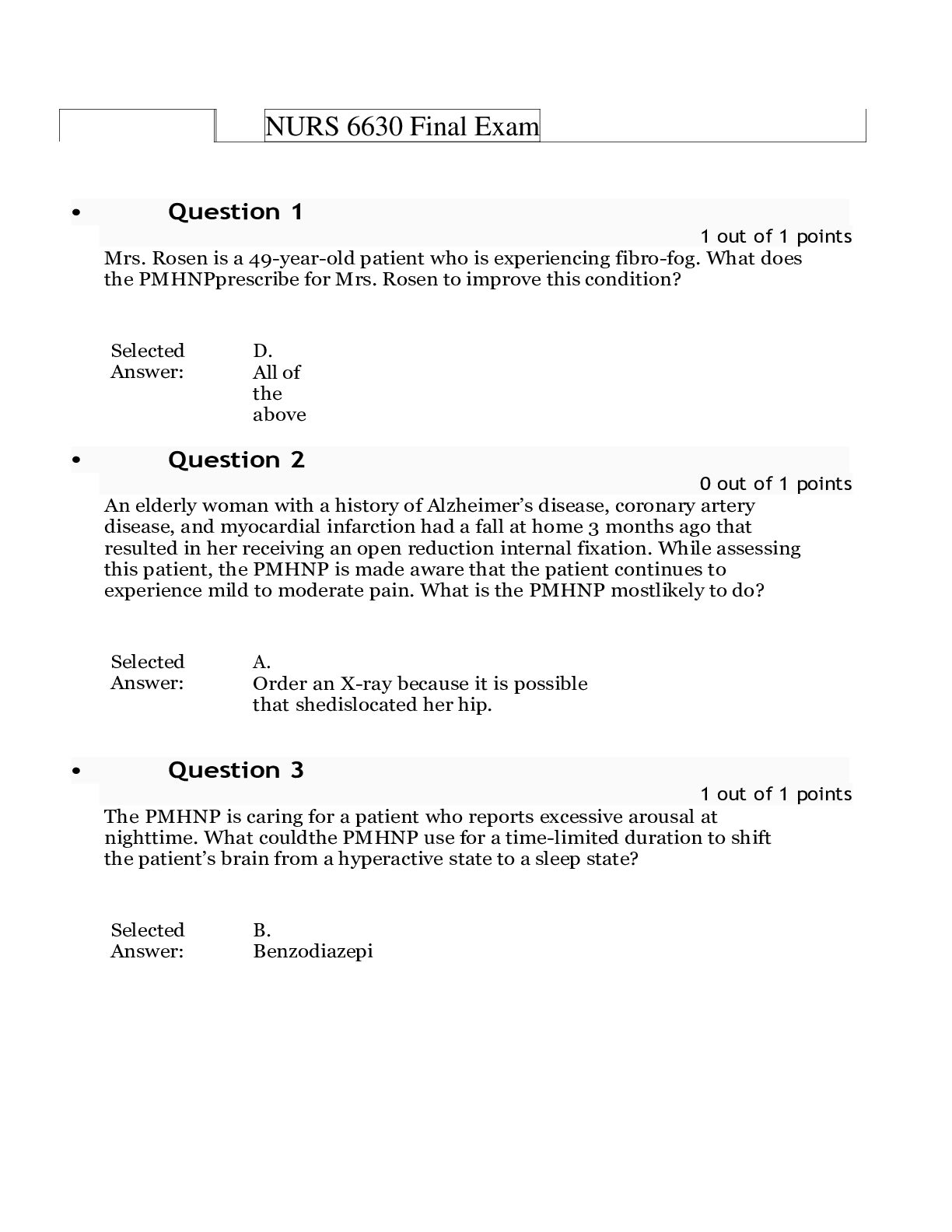Alternative Medicine > EXAM > Arthrex Sports Medicine Onboarding Module #6 Test Questions and Answers A+ Grade (All)
Arthrex Sports Medicine Onboarding Module #6 Test Questions and Answers A+ Grade
Document Content and Description Below
Where does the Pectoralis Major tendon (Pec Major) attach? - ✔✔Origin -Superior: CLAVICLE- anterior border of the medial half of clavicle -Medial: STERNUM-anterolateral border of sternum and cos... tal cartilage of ribs 1-7 -Inferomedial: ABDOMEN-aponeurosis of the external abdominal obliques Insertion -Lateral: distal lateral aspect of greater tuberosity of humerus/bicipital groove of humerus What is the function of the pec major? - ✔✔-powerful ADduction (toward body) of humerus -internal rotation of the humerus (minor role) What is the common cause of pec major tendon rupture? - ✔✔commonly associated with heavy lifting (dips or bench press) usually men 20-40 (rare in women), usually report pop or tearing sensation Where is the most common place to tear the tendon? - ✔✔insertion at the humeral insertion or some at the musculotendinous junction near the insertion but very rarely occurs at the origins What are the challenges associated with the repair? - ✔✔-Repairing the retracted tendon to its anatomic location -Insertional avulsions leave little remnant tendon tissue with which to identify the insertional footprint -Chronic rupture cases also present a surgical challenge to locating the site for anatomic repair and may even require allograft tendon reconstruction What is arthritis caused by? - ✔✔the articular cartilage degenerates over time bc of lack of blood supply Most common fracture site of humerus? - ✔✔the surgical neck SupraspinatusInfraspinatus Subscapularis Teres Minor - ✔✔-Insertion: greater tuberosity (ABduction/forward flexion) -Insertion: greater tuberosity (external rotation) -Insertion: lesser tuberosity (internal rotation) -Insertion: posterior humeral head (external rotation) Anterior/middle/posterior deltoid - ✔✔-affect the rotator cuff muscles Shoulder replacement surgery landmarks to know - ✔✔the "3 Sisters" -Anterior humeral circumflex artery -Anterior humeral circumflex vein -Posterior humeral circumflex vein Proximal humerus divided into 4 parts: - ✔✔-Humeral head/articular cartilage -Greater tuberosity -Lesser tuberosity -Diaphysis/shaft Best way to classify proximal humerus fractures? - ✔✔Combine both: -Neer (2,3,4 parts) -Hertel (lego like configurations) Extra-Articular vs. Intra-Articular fractures - ✔✔-not affecting the glenohumeral/ball and socket joint -affecting the glenohumeral/ball and socket joint Valgus vs. Varus - ✔✔-humeral head pointed away from the joint/articular cartilage pointed straight up -humeral head angled toward the joint/articular cartilage pointed downAvascular Necrosis (AVN)= - ✔✔bone death Percutaneous Pinning - ✔✔-younger patients with good bone quality -simple, displaced 2-part fractures -valgus impacted 3 and 4-part fractures -beach chair position w/ C-arm (same or opposite side) Humeral Suture Plate - ✔✔ORIF -osteoporosis/osteopenia -simple, displace 2-part fractures -displaced 3-part fractures -some 4-part fractures -beach chair position w/ C-arm (same or opposite side) -Deltopectoral approach or Superolateral approach PCL (Posterior cruciate ligament) - ✔✔-double bundle (AL&PM-named for insertion on femur) -not isometric (does not remain the same length through various ROM) reciprocal function -AL: (LARGER)tight in flexion -PM: (SMALLER) tight in extension -primary restraint to posterior translation -posterior sag sign -happens during hyper-extension -much larger and stronger than ACL (30% larger)--> ACL: 38mmx10mm & PCL: 38mmx13mm -Reconstruction always 90 degrees of flexion PCL Tears - ✔✔-5-20% of knee ligament injuries-isolated or combined -direct blow to the proximal tibia -Grade 1: stretch injury -Grade 2: partial tear -Grade 3: complete tear PCL Insertion - ✔✔-insertions re 3X larger than mid substance -femur: 30mm -tibia: 1 CM below joint line PCL Reconstruction - ✔✔-single bundle/double bundle technique -single technique:place femoral tunnel as high as possible on the notch -graft: soft tissue or inlay graft (split achilles tendon-AL&PM) PCL Single Bundle Technique - ✔✔-Femur tunnel:25mm -Intraosseous: 40mm -Tibia tunnel: 35mm PCL Reconstruction- Transtibial - ✔✔-9cm length graft PCL Reconstruction w/ Inlay Graft - ✔✔-minimum tendon graft length 4.5cm Iliopsoas tendon - ✔✔-Illiacus & psoas major muscles -Anterior aspect of the hip and the hip capsule in a groove -trunk and hip flexion/external rotator of the femur Most common nerve injury in hip arthroscopy - ✔✔-vulnerable in portal establishmentSnapping hip types - ✔✔-internal snapping-can hear (release at joint or lesser trochanter) -external snapping (IT band)- can see -intra articular (loose body/labral tear/clicking/catching in the hip) -ischial snapping hamstring (snapping bottom) *very rare Bursa - ✔✔a fluid filled sac or saclike cavity, countering friction at a bony prominence or over a joint Bursitis - ✔✔thickening and inflammation of bursa Femoral neck angle - ✔✔avg- 130 degrees + or - 7 degrees -Shenton's line (should be continuous) Proximal femur fractures - ✔✔-elderly women -Garden classification (grade 1-4) -Pauwel classification (degree of fractures) Hip dysplasia - ✔✔-normal -subluxation -low dislocation -high dislocation *arthroscopy dos not always benefit hip dysplasia Hip labral repair options - ✔✔-pushlock -suturetak -knotless suturetak Periacetabular osteotomy (PAO) - ✔✔-cutting of the bone to free the acetabulum (fix with long cannulated screws)Amnion Matrix - ✔✔-thin, semitransparent membrane lines inner placenta -immune privileged protective barrier w/ anti-inflammatory, anti-scarring and anti-microbial properties -rich in growth factors -5 year shelf life Types of Amnion - ✔✔-AM Thin (soft tissue barrier/wound covering) -AM Cord (8x thicker/can hold a stitch) -Amnion Viscous (Amniotic Fluid-activate the body's own healing response) How is Amnion Matrix prepared? - ✔✔processed via dehydration aseptically Amnion Viscous - ✔✔-1 time use surgical application associated w/ soft tissue procedures -0.5cc, 1cc, 2cc -2 year shelf life (in freezer) -once thawed must be used w/in 2 hours Amnion Matrix surgical indications - ✔✔-adhesion barrier -tendon/nerve wrap -RCR -hand/wrist -foot/ankle -reconstructive patch -wound covering/healing Ho along does it take to resorb? - ✔✔-only clinical application measured in the corner (2-8 weeks) Natural healing properties of Amnion: - ✔✔-Regenerative: rich in growth factors and collagen that support tissue growth-Protection: acts as an adhesion barrier to protect tendons and nerves -Improved healing: reduce inflammation, anti-scarring, anti-microbial Amnion streamer - ✔✔can deploy amnion streamer wherever you can use a suture lasso Distal Radius Fractures - ✔✔-account for 1/6 of all fractures -bimodal dsitrubtion: young and old -4x more common in older omen than men -common in caucasian women (osteoporosis) DR fracture pattern - ✔✔-Colles (90%) FOOSH -Smith's (5%) opposite-wrist turned inward -Barton's -Chauffeur's -Die punch Watershed Line - ✔✔-distal most point for hardware to be placed Volar Tilt - ✔✔-most important -angle of distal radius in sagittal plane -normal is 11 degrees -surgery: >10 dorsal tilt and >15 volar tilt Volar Plating Technique - ✔✔-narrow -standard -wide -3/5/7/hole -Distal 2.4mm VAL screws-Shaft 3.5mm nonlocking/locking screws [Show More]
Last updated: 10 months ago
Preview 3 out of 8 pages

Loading document previews ...
Buy this document to get the full access instantly
Instant Download Access after purchase
Buy NowInstant download
We Accept:

Reviews( 0 )
$5.00
Can't find what you want? Try our AI powered Search
Document information
Connected school, study & course
About the document
Uploaded On
Sep 20, 2024
Number of pages
8
Written in
Additional information
This document has been written for:
Uploaded
Sep 20, 2024
Downloads
0
Views
34

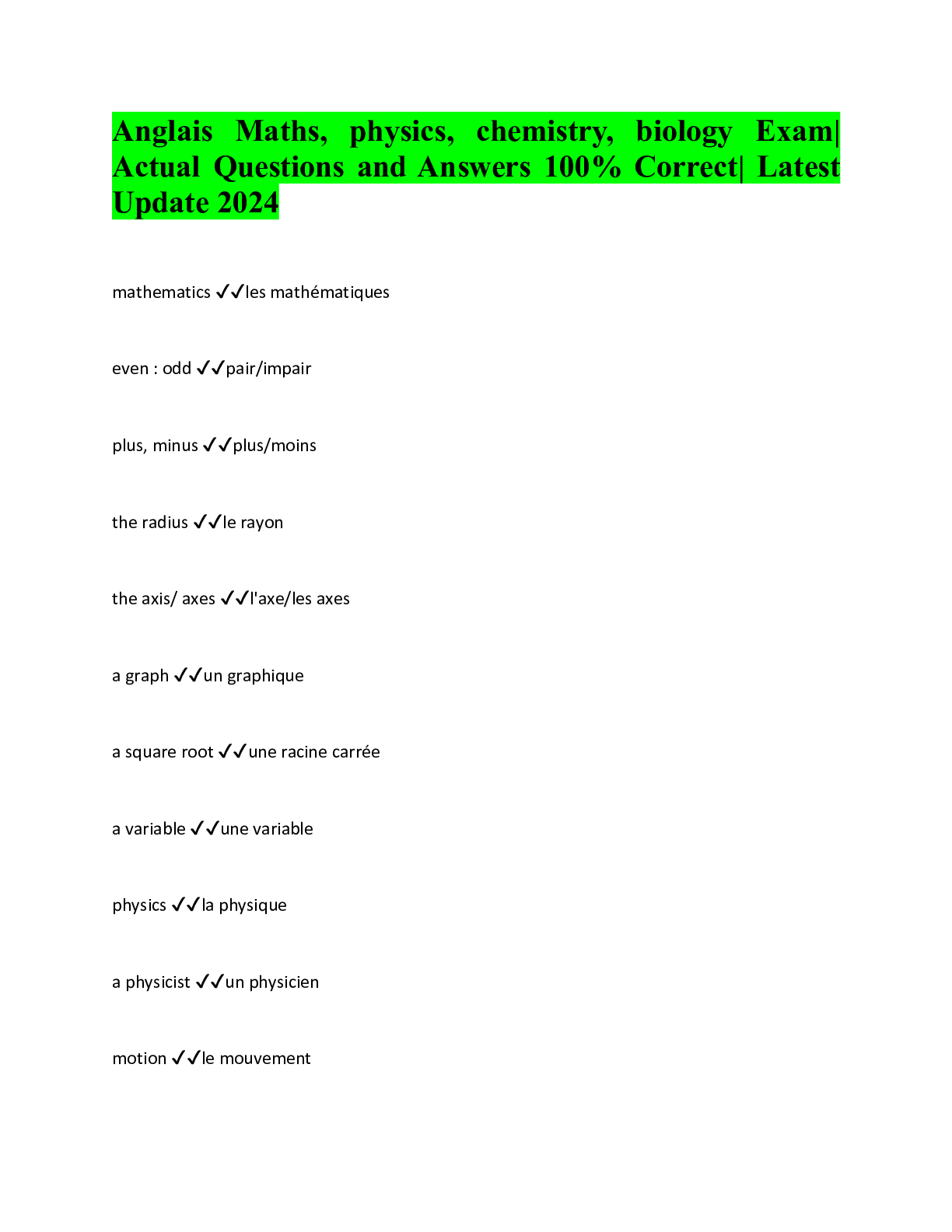
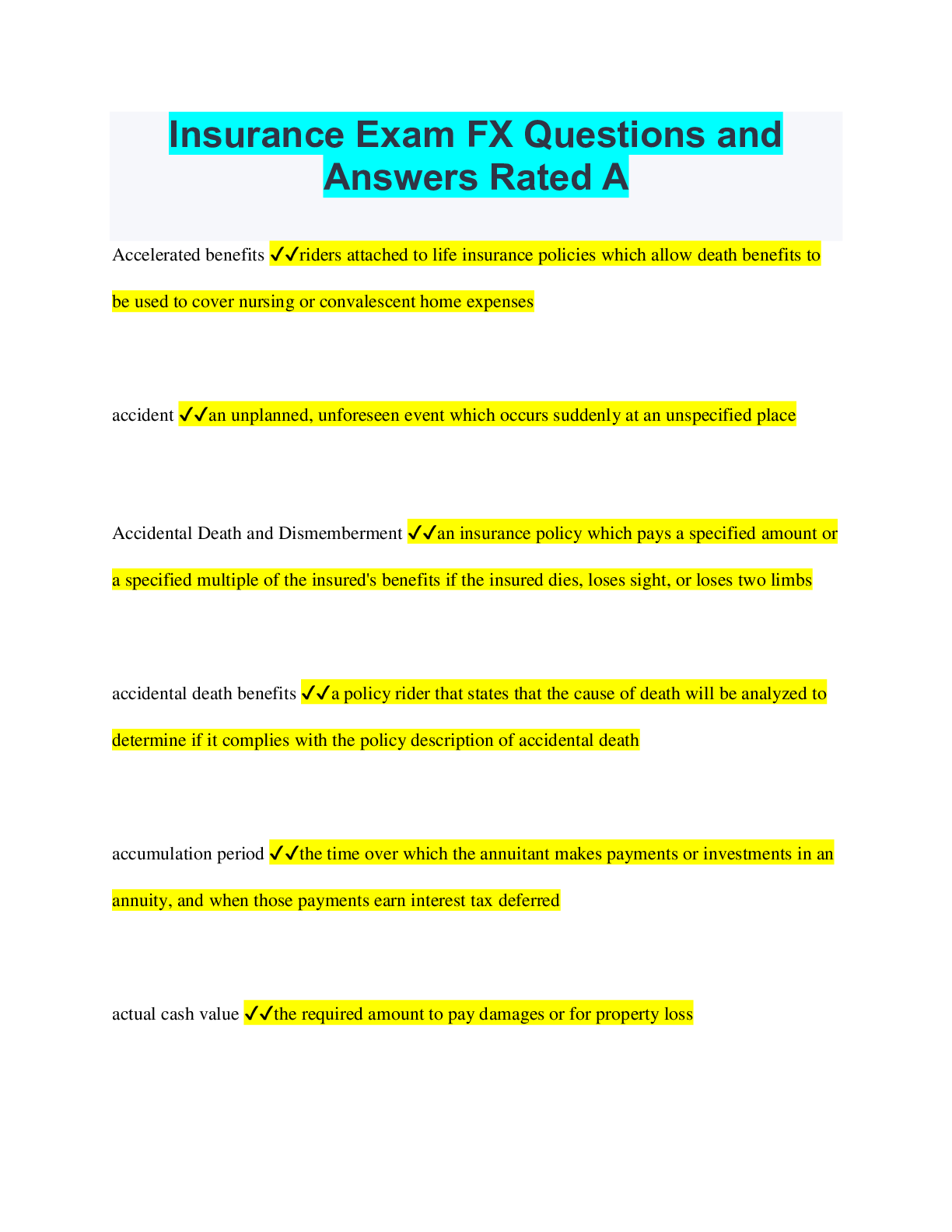
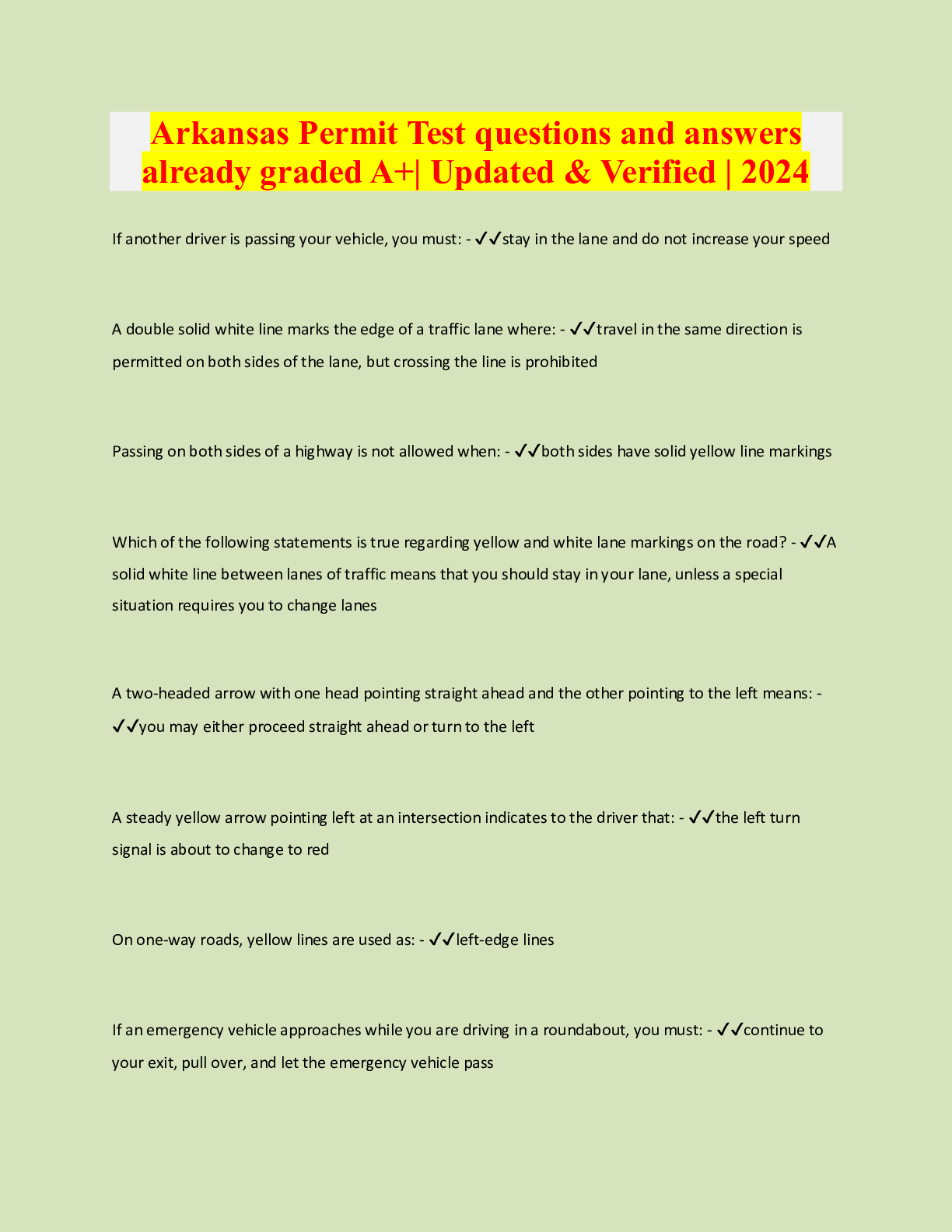
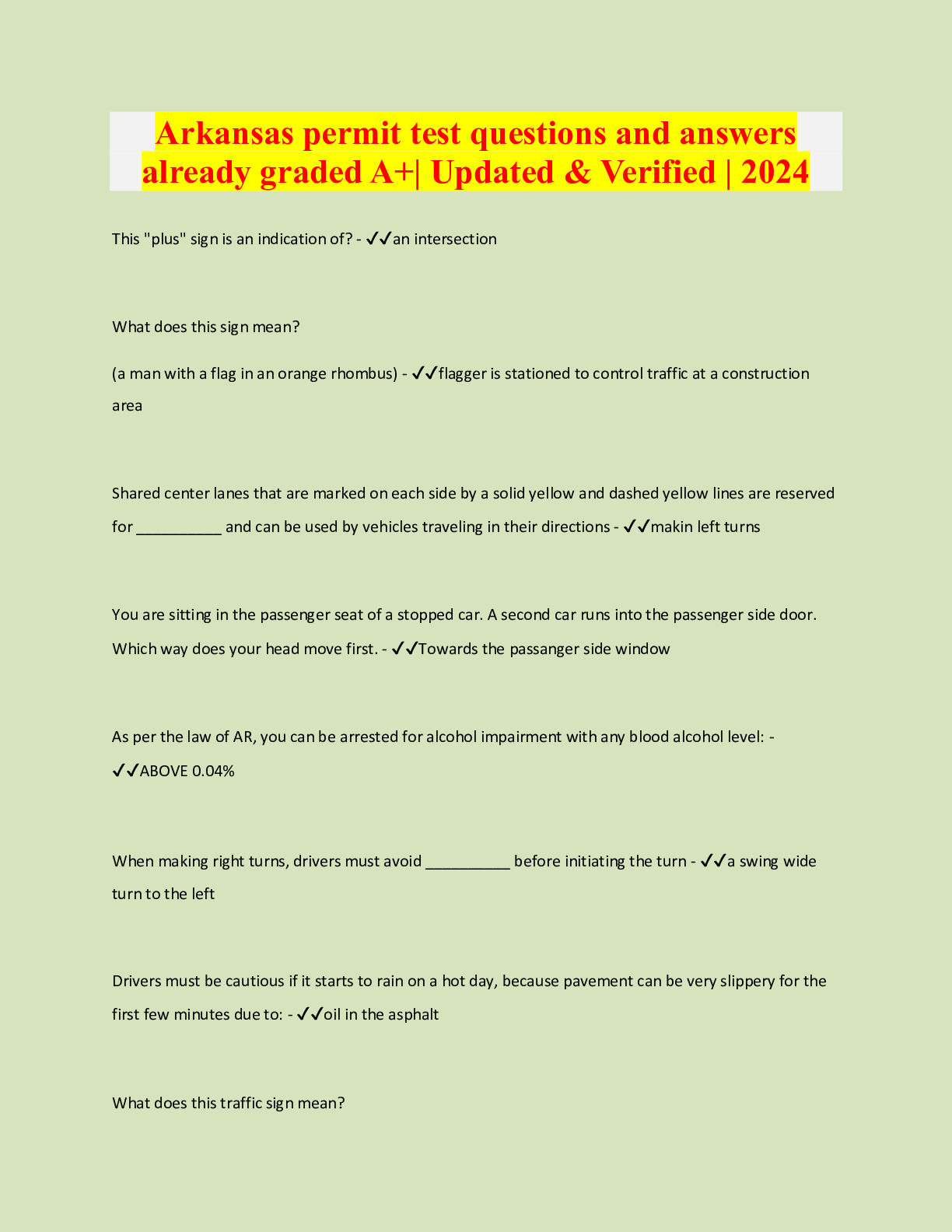

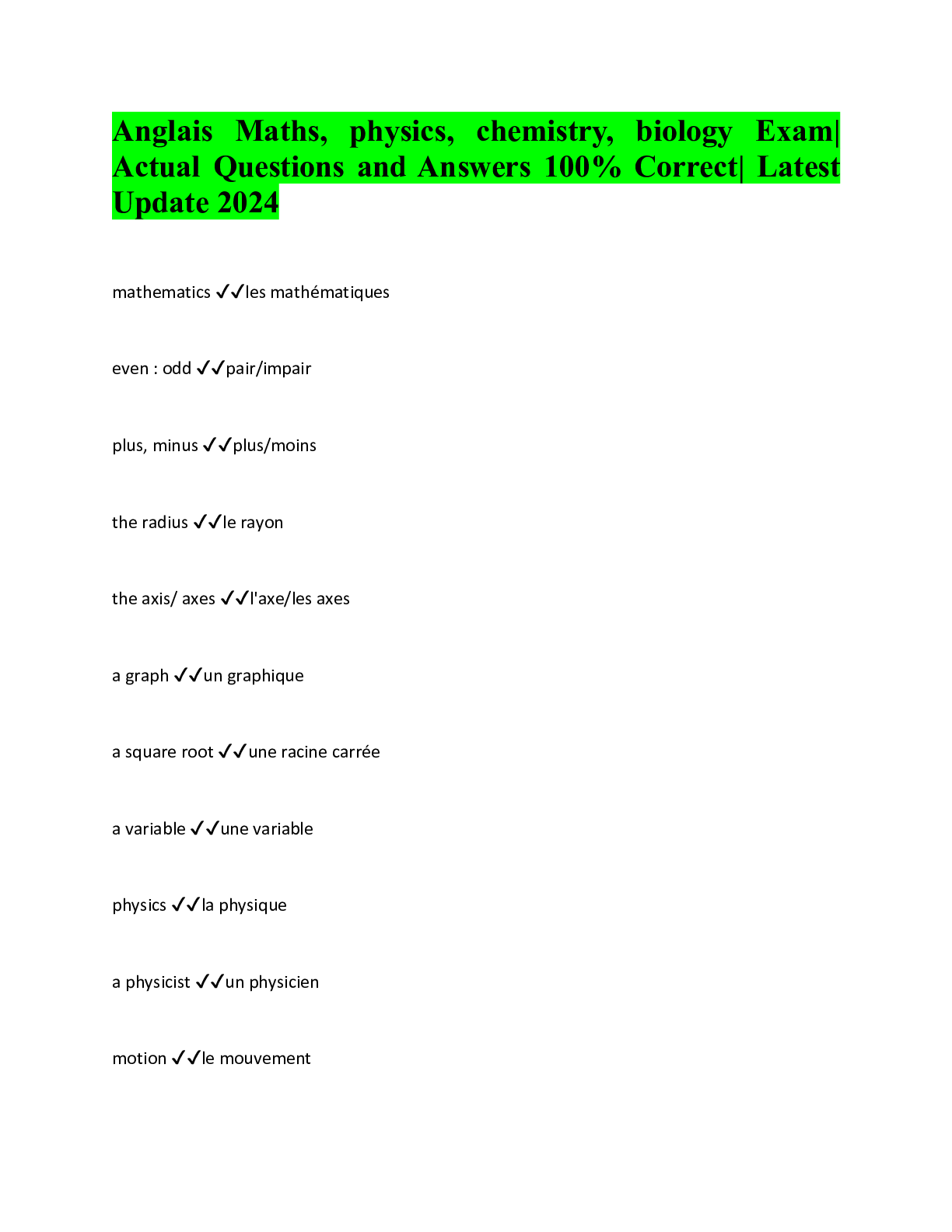
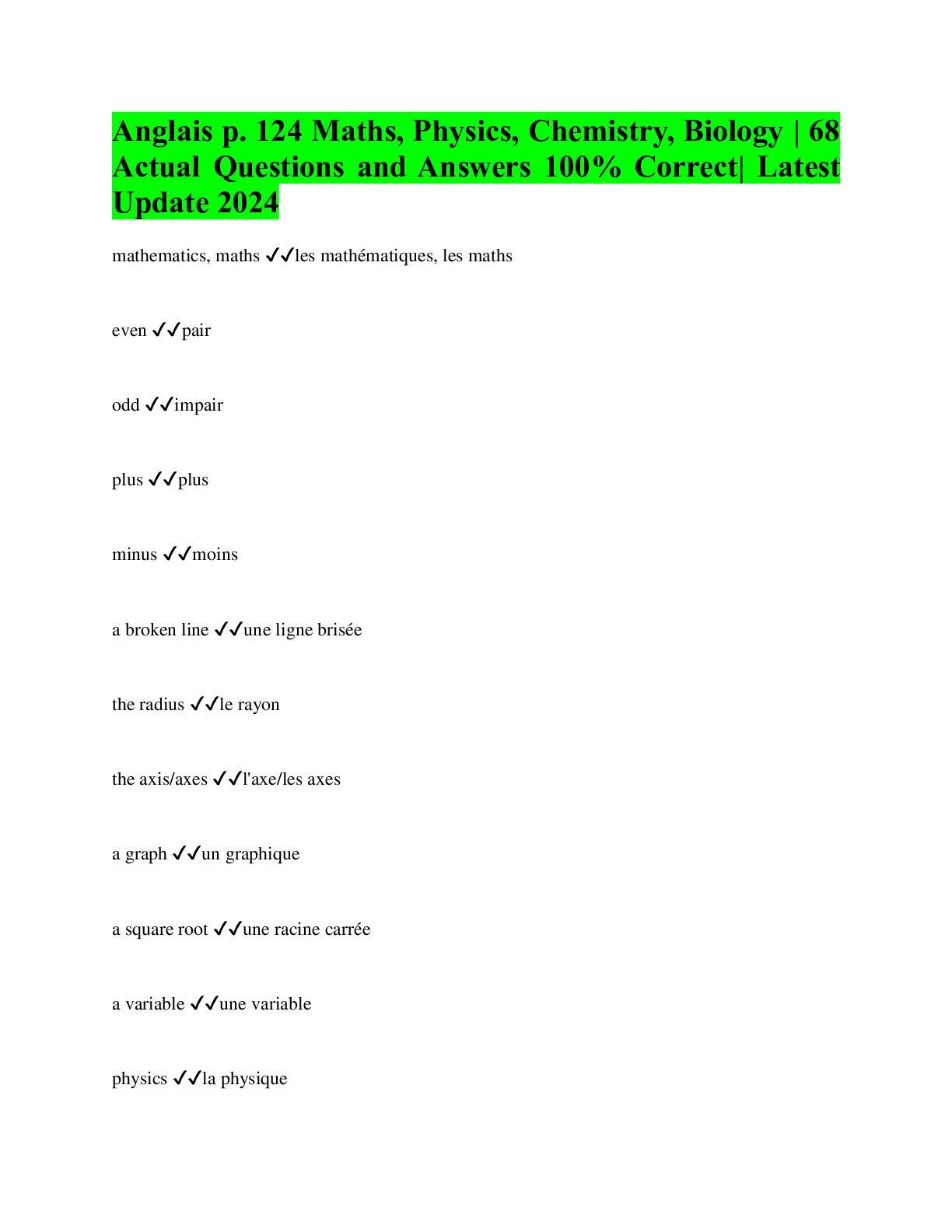
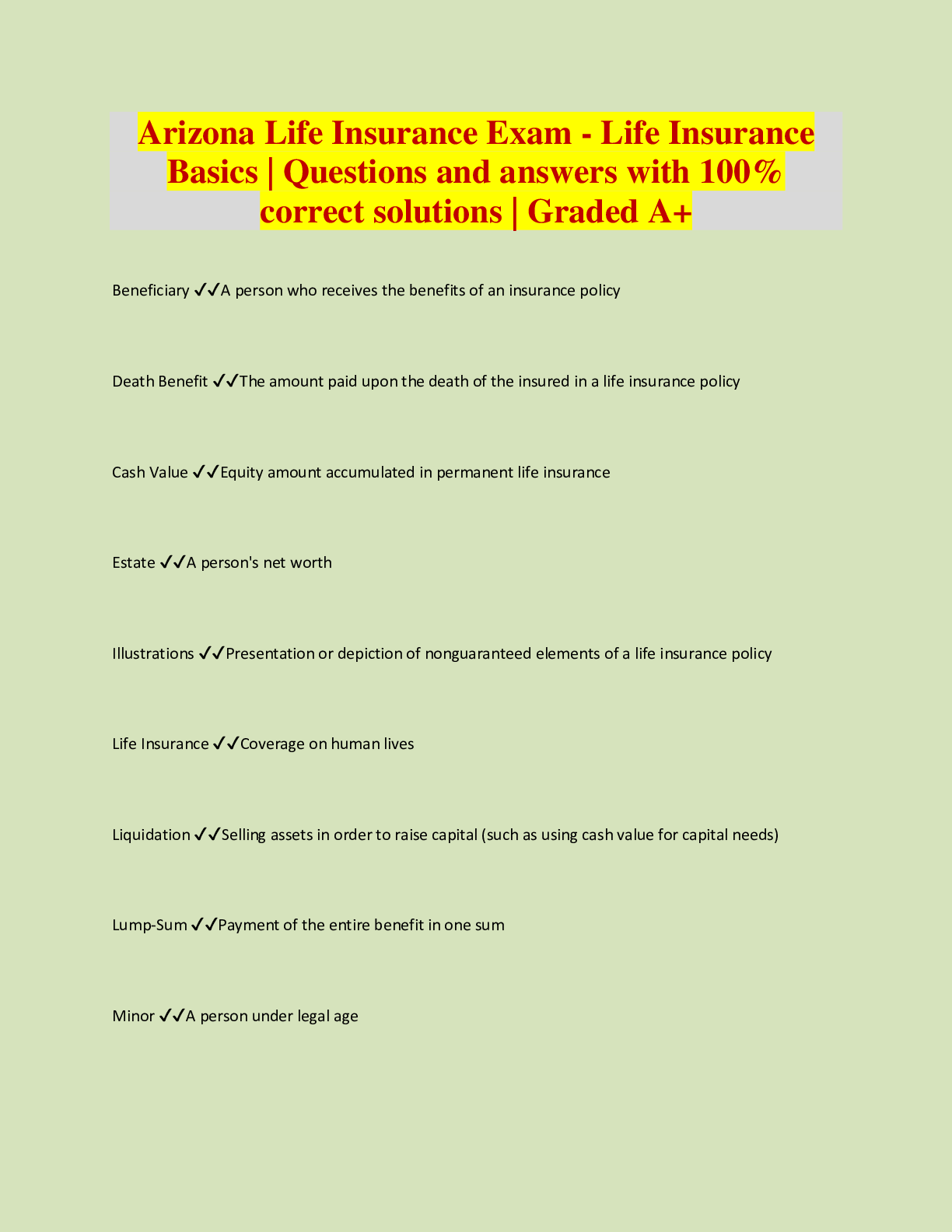
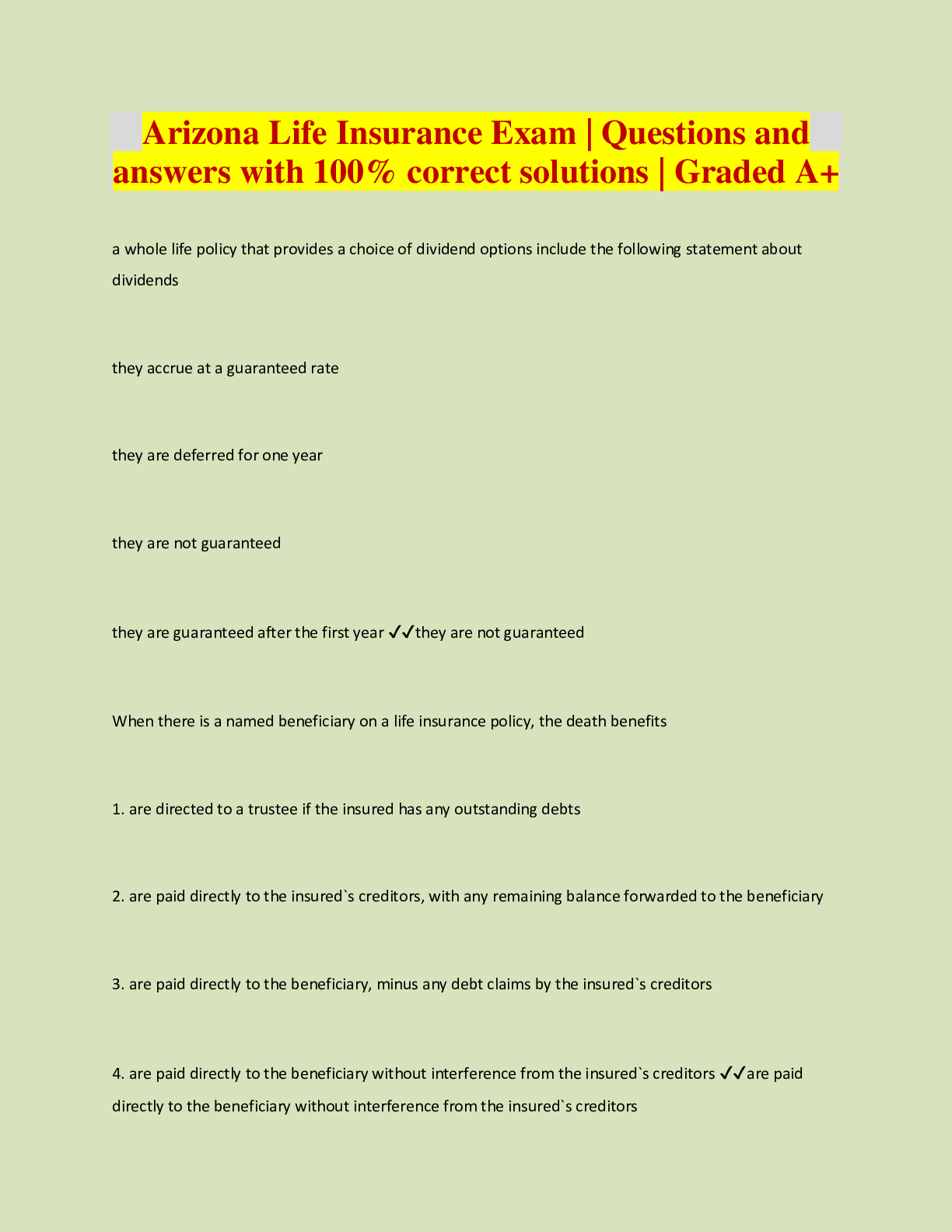


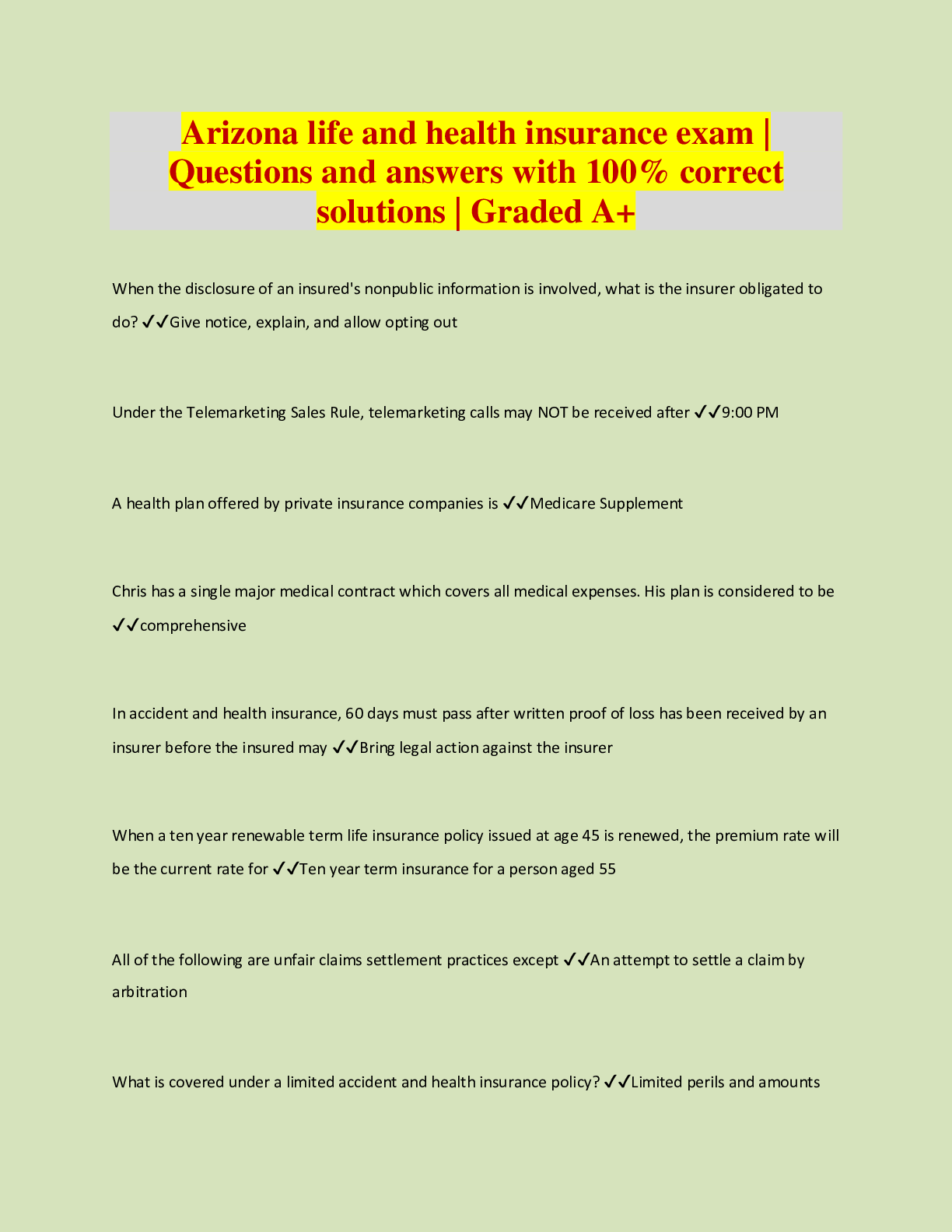

.png)

